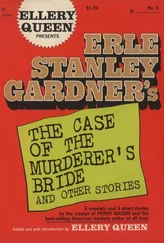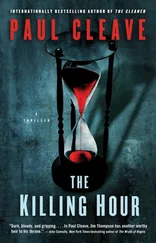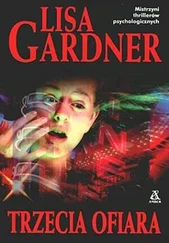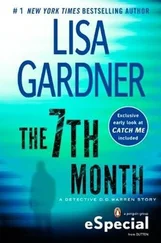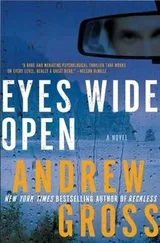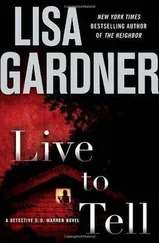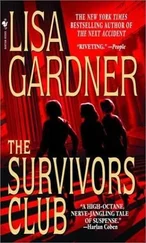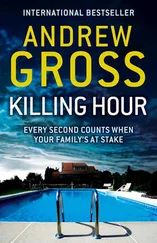In the basement, the elevator door opened to a wood-paneled lobby area, with corridors going off every which way. Here, visitors could sit on the leather sofa while admiring various posters advertising BSU projects. “Domestic Violence by Police Officers,” declared one, promoting an upcoming seminar. “Suicide and Law Enforcement,” said another. “Futuristics and Law Enforcement: The Millennium Conference,” advertised a third.
When Rainie had first met Quincy seven years ago, he’d been conducting research for the BSU. His project of choice-developing a schema for the effective profiling of juvenile mass murderers. Never let it be said that the BSU researchers were a bunch of lightweights.
And just in case someone thought the group was without a sense of humor, a new addition had been included in the lineup of agent photographs adorning the wall. Last photo in the middle row-a lovingly framed headshot of an extraterrestrial. Complete with a cone-shaped head and big black eyes. Really, it was the best-looking photo of the bunch.
Kaplan took off down the middle corridor and Rainie and Quincy followed in his wake.
“Miss it?” Rainie whispered in Quincy’s ear.
“Not in the least.”
“It’s never as dreary as I expect.”
“Wait until you’ve spent an entire week working without any natural light.”
“Whiner.”
“Be nice, or I’ll lock you in the bomb shelter.”
“Promises, promises,” Rainie murmured. Quincy squeezed her hand, the first contact he’d made with her all day.
From what Rainie could determine, the space down here was basically a large square, bisected by three rows of hallways sprouting narrow offices. Kaplan came to the last door of the middle row, knocked twice and a man promptly opened it as if he were expecting them. “Special Agent Kaplan?” he asked.
Rainie bit her lower lip just in time. Wow, she thought. A Quincy clone.
Dr. Ennunzio wore a trim-fitting navy blue suit with proper Republican-red tie. In his mid-forties, he had the lean build of an avid runner and the intense gaze of an academic who always took work home at night. His short-cropped hair was dark, but beginning to gray at the temples. His manner was direct, his expression slightly impatient, and Rainie already had a feeling he considered this meeting a waste of his very valuable time.
Kaplan made the introductions. Ennunzio shook Rainie’s hand briefly, but paused with genuine sincerity in front of Quincy. Apparently, he was familiar with the former agent’s work.
Rainie simply kept gazing from the linguist to Quincy, back to the linguist. Maybe it was an FBI hiring requirement, she thought. You must wear these suits and have eyes this intense to ride this ride. That could be.
Ennunzio gestured to his cramped office, much too small to hold four grown adults, then ushered them back down the hallway to an unused conference room.
“This used to be the director’s office,” he explained, his attention returning to Quincy. “Back in your day. Now it’s a conference room, while the bigwigs are across the way. It’s not so hard to find their new offices. Just follow all the posters for the Silence of the Lambs .”
“Everyone loves Hollywood,” Quincy murmured.
“Now then,” Ennunzio said, taking a seat and placing a manila folder in front of him, “you had questions about Special Agent McCormack from the GBI?”
“Yes,” Kaplan spoke up. “We understand you were supposed to meet with him.”
“Tuesday afternoon. It didn’t happen. I got held up at a conference in D.C., sponsored by the Forensic Linguistics Institute.”
“A conference for linguists,” Rainie muttered. “That had to be a blast.”
“Actually it was quite fascinating,” Ennunzio told her. “We had a special presentation on the anthrax envelopes sent to Senator Tom Daschle and Tom Brokaw. Were the envelopes sent by someone whose first language was English or Arabic? It’s an extremely interesting analysis.”
Rainie startled, intrigued in spite of herself. “Which one was it?”
“Almost certainly a native English speaker trying to impersonate an Arabic speaker. We call that ‘trick mail,’ when the sender attempts certain devices to mislead the receiver. In this case, the definitive evidence is the seemingly random mix of uppercase and lowercase letters throughout the text on the envelope, as well as a mixing of large and small caps. While this is meant to appear sloppy and childlike-someone uncomfortable with proper English syntax-in fact, it indicates someone so comfortable with the Roman alphabet he can manipulate it at will. Otherwise, it would be difficult to construct such a varied combination of letter styles. And while the messages in the two envelopes are short and filled with misspellings, this is again an attempt to deceive. Short missives actually involve a very concise use of the English language and are consistent with someone of higher, not lower, education. All in all, it was a first-rate presentation.”
“Okay,” Rainie said. She looked at Kaplan helplessly.
“So you didn’t actually see Special Agent McCormack on Tuesday?” Kaplan asked.
“No.”
“But you had spoken to him before?”
“When Special Agent McCormack arrived at the National Academy, he stopped by my office asking if I would have time to consult on an old homicide case. He had copies of some letters that had been sent to the editor, and he wanted any information on them I could provide.”
“Did he give you copies of the letters?” Quincy spoke up.
“He gave me what he had. Unfortunately the GBI was only able to recover the original document for the last letter, and frankly, there’s not much I can do with published versions. The newspapers sanitize too much.”
“You wanted to see if the guy also mixed small and large caps?” Rainie asked.
“Something like that. Look, I’ll tell you the same thing I told Special Agent McCormack. Forensic linguistics is a broad field. As an expert, I’m trained to study language, syntax, spelling, grammar. I don’t analyze penmanship per se-you need a handwriting expert for that-but how a document is prepared and presented provides context for my own analysis, so it is relevant. Now, within the field, we all have our own domains. Some linguists pride themselves on a sort of forensic profiling-you give them a document, and they can tell you the probable race, gender, age, education, and street address of who wrote it. I can do that to a certain degree, but my own subspecialty is authorship. You give me two samples of text and I can tell you if the person who wrote the threatening letter is the same person who wrote that second note to his mom.”
“How do you do that?” Rainie quizzed him.
“In part, I look at format. Mostly, however, I’m looking at word choice, sentence structure, and repeated errors or phrases. Everyone has certain expressions they favor, and these phrases have a tendency to appear over and over again in their writings. Are you familiar with the cartoon sitcom The Simpsons ?”
Rainie nodded.
“All right, if you were the chief of police in Springfield and you received a ransom note including repeated uses of the expression ‘D’oh!,’ you’d probably want to start your investigation with Homer Simpson. If, on the other hand, the letter contained the phrase ‘Eat my shorts,’ you’d be better off looking at the younger Simpson, Bart. All people have phrases they like to use. When writing text, they are even more likely to repeat these catchphrases. The same goes for grammatical mistakes and spelling errors.”
“And in the case of the Eco-Killer?” Quincy spoke up again.
“Not enough data points. Special Agent McCormack presented me with three copies and one original. With only one original, I can’t compare penmanship, ink, or paper choice. In terms of content, all four letters contain the exact same message: ‘Clock ticking… planet dying… animals weeping… rivers screaming. Can’t you hear it? Heat kills…’ Frankly, to compare authorship, I need additional material, say another letter you believe may have been written by the suspect, or a longer document. Are you familiar with Ted Kaczynski?”
Читать дальше

